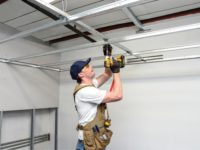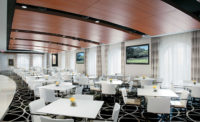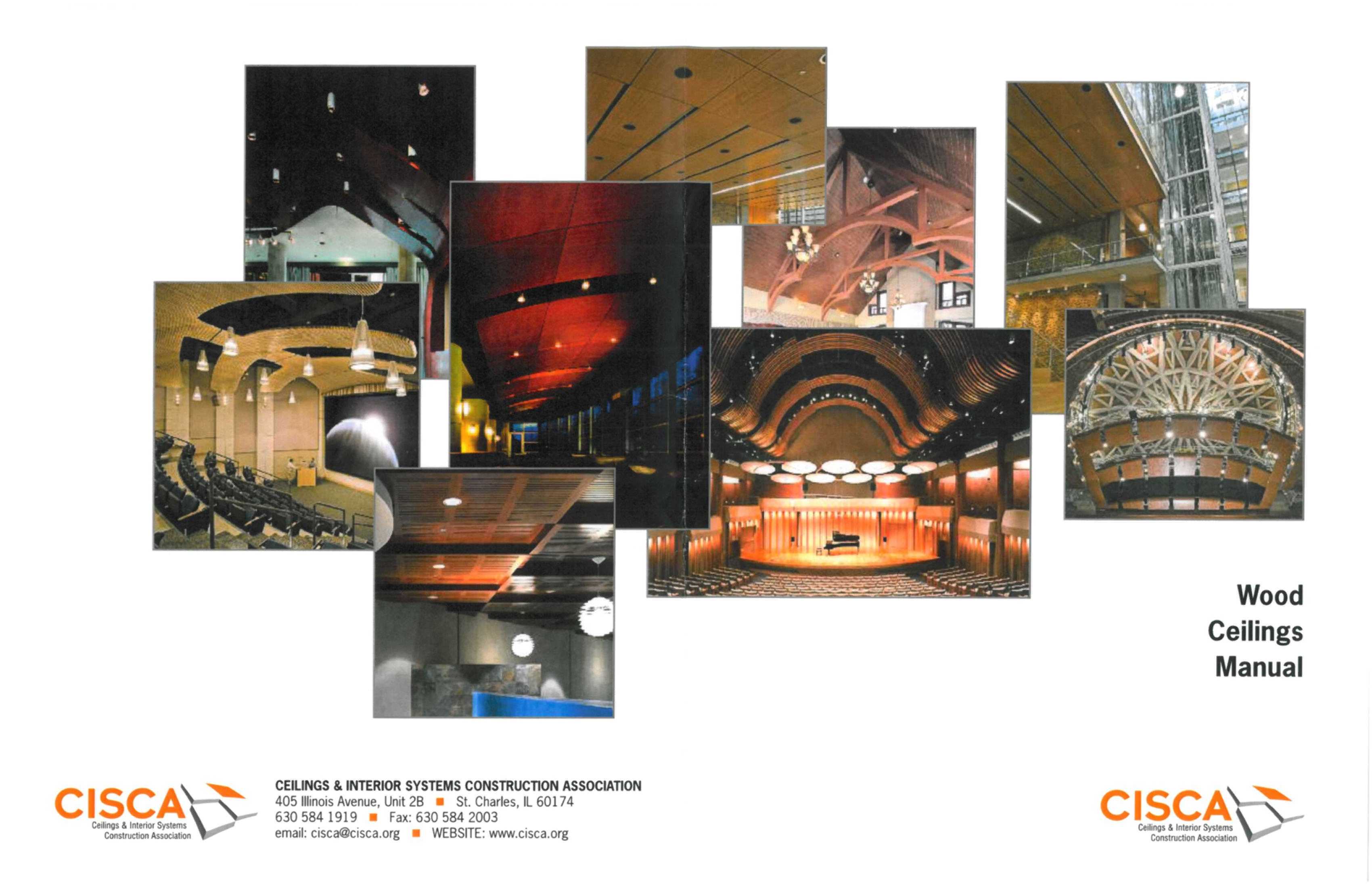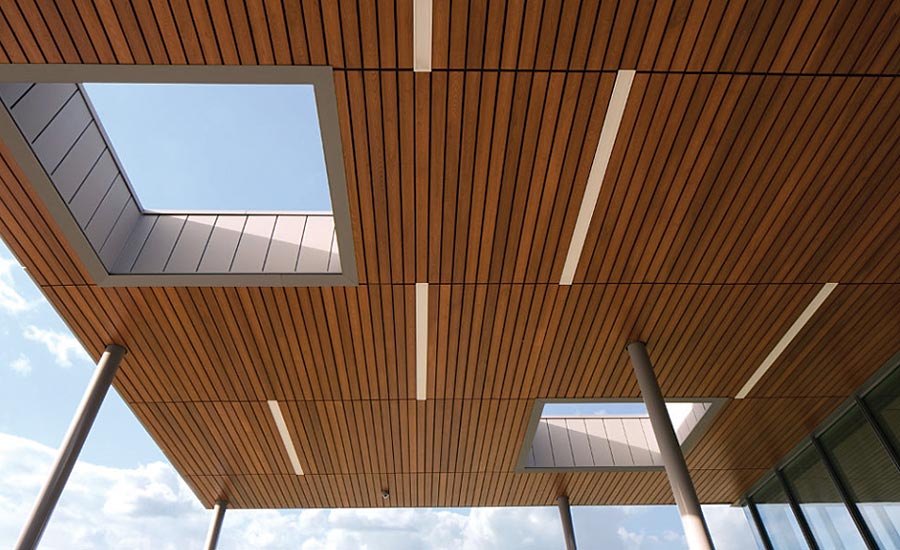Contractor-Friendly Wood Ceilings and Walls
Advances In Production, Product Design And Contractor-Centric Service Reduces Lead Times, Labor And Ordering.












With hundreds of finishes, sizes, veneers and patterns available, the process for selecting wood ceiling and wall products has historically been daunting. How do contractors select the right wood products and installation methods to ensure a successful job that doesn’t break the bank?
This road has been especially difficult to navigate if working without clear direction from an architect or interior designer, or when asked to provide alternatives. But that’s exactly why manufacturers are focusing on new lines and novel approaches to take the guesswork out of the selection process. Product advances and support systems make finding the right wood ceiling or wall products a better experience for contractors by reducing lead times, installation costs and minimizing ordering headaches.
Contractors can choose from standardized products featuring common sizes, materials, configurations, species, and finishes. Or, when the architect has designed to their heart’s content, they can find custom solutions with the guidance of skilled technical specialists.
Regardless of the product, standardized installation methods and the right support from trusted manufacturer partners make wood panels, linear planks, beams, open cell, grille modules and canopies just as simple to install as other ceiling products.
Product Advancements Equal More Choices for Contractors
Today there are a variety of products on the market that offer the luxurious aesthetic of natural wood with the installation ease and simplicity of traditional acoustical panels. These products provide contractors with installation options and configurations to suit any project or application.
Contractors can find traditional panel products and select a common lay-in panel installation, venture into higher-end aesthetics with lift-and-shift semi-concealed panels, or choose large format, easy-to-install hook-on panels. Open cell, beam and canopy ceiling products provide unique visuals, and often feature straight-forward, conventional installation methods. And many of these products rest in or attach to a typical acoustic suspension system, or directly to a substrate.
Linear plank ceilings provide a clean, continuous look for an entire ceiling or wall installation. “By moving from linear planks to panelized linear products, contractors can order panels that install faster than planks while maintaining the linear visual,” says Zachary Donahue, product manager for Wood Ceilings and Walls at CertainTeed.
“Linear planks and panelized products do come with some drawbacks,” he adds. “Because they are directly fastened, they can be more difficult to remove for access to the ceiling plenum, unless you move to a panelized product that has an accessible hook-on installation method.”
Linear planks and panelized linear products come with varying fire ratings. Normally, acoustical ceiling products have Class A fire ratings per ASTM E84 testing. However, while certain linear planks and panelized linear products finished in a veneer might be Class A, others made from solid wood may only achieve a Class C rating. Obviously, this is an important consideration for each project.
Grilles offer a multitude of installation methods and visuals. There are products with spring clip attachment like grilles with dowels and direct mount installation where grilles with backers are directly fastened to the acoustical suspension system. Anything direct mount can be attached to a wall structure which increases its design flexibility.
“With a panelized product like panelized linear or grilles to typical 2-feet-by-2-feet to a suspension system module, contractors can install a regular black-faced acoustical panel system above the grilles—as opposed to using black roll-on acoustical insulation not designed to be visible,” says Donahue. “This increases installation speed, provides a consistent visual and provides predictable, tested acoustic performance. This is especially beneficial in restaurants, bars or other places where noise can be overwhelming.”
For custom looks without the hassle of a fully customized ceiling, contractors can select canopies or beams. However, it is important to pay attention to how hanger orientation will affect the installation.
Donahue notes, “Contractors need to make sure their planned attachment points work around ductwork and mechanicals while leaving enough space to maneuver the panel—contractors should look for products that have flexibility in where the hanger attaches to the panel to allow for minor adjustments in the field in lieu of products with fixed attachment points.”
It’s also important to ensure that the installation team knows if a canopy’s or other free-hanging product’s attachment points are fixed or adjustable. Adjustable attachment points allow for some flexibility to work around mechanicals and other unanticipated obstacles.
“If you need to move things or change attachment points, educate yourself on how adjustable that attachment point is and if you can move it around obstacles in the ceiling space,” adds Donahue.
He also stressed that installers need to know if an exposed edge or reverse is finished or unfinished prior to installation in order to make sure that there are no sight lines that would expose an unfinished edge or side. While contractors should order as many factory-finished products as possible, field work/finishing is oftentimes unavoidable.
“This is where edge treatments come into play,” says Donahue. “Contractors will want to make sure to get the right components to hide or disguise any unfinished, visible surfaces. This is why it’s so critical to discuss your order with the manufacturer in detail. If you are getting anything with a finished edge, you should receive a touch-up kit that corresponds with the finish on the panel.”
However, not all touch-up kits are created equal. In general, a manufacturer will send a clear coat kit, but installers may need the actual tint that matches the product. This is especially true if there are multiple modifications done on the jobsite.
“While a clear coat is helpful at hiding scratches and blemishes, installers will need a tinted product if they are cutting on site,” says Donahue. “Make sure to find out if your edge banding is finished or unfinished and make sure you know if its glue-on or iron-on. You will need the right tools and coatings on-site in order to save time and money on labor.”
Tips, Tricks and Helpful Hints
Since ceilings are both functional and decorative, there are often unique demands placed on material aesthetics as well as performance. And these demands don’t always overlap. So, while a product may look great, it doesn’t mean it’s the right solution for the space.
Ceiling products and suspension systems are affected by the uses and needs of the facilities in which they are installed. Exposure to heat, humidity, saltwater and other conditions can have potentially adverse effects on the materials used.
“It’s extremely important for contractors to understand environmental limitations,” says Donahue. “Not all facilities are conditioned year-round. When schools and universities go on break over summer, for example, air conditioning usage is often reduced to curb energy consumption, and humidity levels may rise as a result. This can have a damaging effect on wood products.”
Another tip from Donahue pertains to product order management. He says that underestimating extra materials and surplus attic stock is a common problem.
“It’s critical that all components in a wood product are ordered at the same time,” Donahue says. “Veneer lots and finish lots can change, and ordering additional material weeks or months after the initial order is placed can cause problems with matching,” he added.
Since wood is a natural material and varies from piece to piece, it’s important to evaluate the material and how it looks prior to installation. There may be natural variations in the materials so it’s important to lay them out ahead of time to avoid any obvious clashes.
Donahue also stresses that contractors should ask plenty of questions and never assume that the manufacturer understands all of their needs unless they confirm it over the phone, in writing or in person.
“Be honest with your manufacturer when you need help or don’t understand something. The manufacturer is there to help you and has technical specialists whose primary function is to ensure your project goes well.”
To secure better pricing and for projects that demand quick turnaround times, contractors can select standardized products and installation methods to create custom-looking visuals. When opting for made-to-order and customized products, it’s important to allow for longer lead times for made-to-order and customized products.
Thanks to manufacturer support and advancements in product design, wood ceilings are now easier than ever to select, modify and install. The result is simplified ordering and reduced lead times and labor costs for contractors.
Looking for a reprint of this article?
From high-res PDFs to custom plaques, order your copy today!














